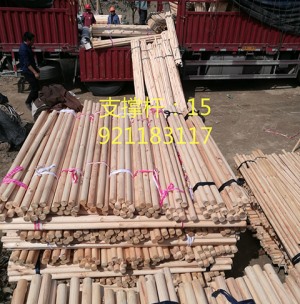Generally, wood is dried at a temperature of 100 degrees Celsius for conventional drying, 100--150 degrees for high-temperature drying, and 150 degrees for high-temperature drying. The heat treatment of wood is to use wood to continue processing for a certain period in a high-temperature and low-oxygen environment close to or above 200 degrees. After time, the hemicellulose in the wood is degraded, the hydroxyl groups in the wood cell wall are reduced, the hygroscopic function of the wood is reduced, and the dimensional stability and resistance to biological damage are improved. Therefore, high-temperature heat-treated wood is widely valued as a new material.
The treatment process has a crucial impact on the material. Parameters such as treatment temperature, treatment time, heating rate, wood species, weight and size of the specimen, initial moisture content, etc. will all affect the performance of the product. The determination of the treatment process is mainly based on the product. According to the purpose of use, optimize between the improvement of water absorption performance and the decrease of mechanical properties to find an acceptable balance point. According to the different media used in the treatment, the treatment process is mainly divided into three types.
Compared with untreated wood, the obvious change of heat-treated fir wood is that the equilibrium moisture content decreases, and then the related expansion and contraction properties are improved. Experiments have proved that when the treatment temperature exceeds 200 degrees, the weather resistance of fir wood The biggest change after birch and poplar treatment is that the impact of changes in wood moisture content on their dimensional stability is significantly improved. The overall results show that radial wood with more uniform raw materials has better treatment effects, while Wood containing knots or chords will have more defects after treatment.
Experimental results on the corrosion resistance of treated wood show that its corrosion resistance is significantly improved; in addition, the hygroscopicity of the treated material decreases, and the distance between the moisture absorption curve and the desorption curve is significantly greater than that of untreated wood, thus reducing the hygroscopicity under different climate conditions. Below, the difference in chordal radial expansion and contraction causes deformation.

Related Industry Knowledge
- Methods for preventing corrosion and discoloration of fir wood piles
- Uses of radiata pine logs imported from New Zealand
- How to construct round wood piles
- Correct method of pine pile construction
- Classification of larch wood pile tube holes and transverse, radial and chordal sections
- Precautions for using fir support poles
- How to choose fir wood piles
- The solution to piling fir wood piles in rivers
- Construction of fir wood pile rockery on revetment
- Greening fir pole uses
- What is the structure of pine wood piles?
- Some issues you should pay attention to when using pine piles
- How to use fir stakes to protect large trees
- The reason why cedar piles are widely used
- Construction method of pine piles
- How to identify the quality of fir wood piles
- The selection of fir wood piles should focus on quality
- Some issues you need to pay attention to when using pine piles
- How to keep fir wood piles fresh
- Is it necessary to take anti-corrosion measures for fir wood piles?



